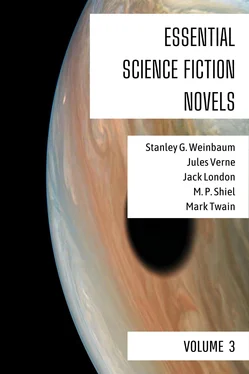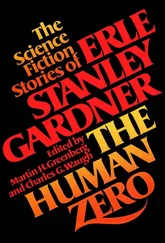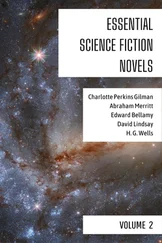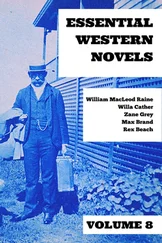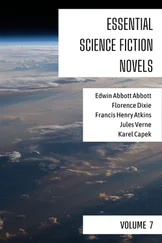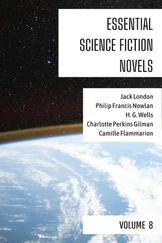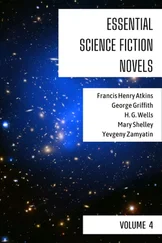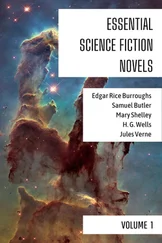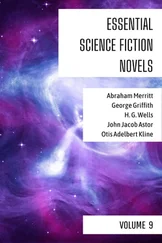The Portent , by George MacDonald, is a curious study of hypnotic influence, of a woman who is her true self only when in a somnambulistic state. A supernatural connection of soul exists between her and a youth born on the same day, and it is only through his hypnotic aid that she gains her personality and sanity. James L. Ford plays with the subject by having a group of persons in an evening party submit themselves to be hypnotized in turn, each telling a true story of his life while in that condition. W. D. Howells combines mesmerism with spiritualism in his novel, where the séances are really the result of hypnotism rather than supernatural revelation as the medium thinks. H. G. Wells has used this theme, as almost every other form of scientific ghostliness, though without marked success. The prize story of hypnotism, however, still remains Du Maurier’s Trilby , for no mesmerist in this fiction has been able to outdo Svengali.
Uncanny chemistry forms the ingredient for many a modern story. The alchemist was the favored feature of the older supernatural fiction of science, and his efforts to discover the philosopher’s stone and to brew the magic elixir have furnished plots for divers stories. He does not often waste his time in these vain endeavors in recent stories, though his efforts have not altogether ceased, as we have seen in a previous chapter. A. Conan Doyle is among the last to treat the theme, and makes the scientist find his efforts worse than useless, for the research student finds that his discovery of the art of making gold is disturbing the nice balance of nature and bringing injury to those he meant to help, so he destroys his secret formula and dies. The Elixir of Youth illustrates the transference of power from the sorcerer to the scientist, for the magician that gives the stranger a potion to restore his youth tells him that he is not a sorcerer, not a diabolic agent, but a scientist learning to utilize the forces that are at the command of any intelligence.
Barry Pain’s The Love Philter is related both to the old and the new types of supernatural chemistry. A man loves a woman who doesn’t care, so he asks aid of a wise woman, who gives him a potion that will surely win the stubborn heart. As he lies asleep in the desert, on his way back, he dreams that his love says to him that love gained by such means is not love, so he pours the liquid on the sand. When he returns, the woman tells him that she has been with him in his dreams and loves him because he would not claim her wrongly. Blue Roses is another of his stories of magic that bring love to the indifferent. Twilight , by Frank Danby, is a novel based on the relation between morphia and the supernatural. A woman ill of nervous trouble, under the influence of opiates, continually sees the spirit of a woman dead for years, who relives her story before her eyes, so that the personalities are curiously merged. This inevitably suggests De Quincey’s Confessions of an English Opium-Eater with its dream-wonders, yet it has a power of its own and the skillful blending of reality with dream-supernaturalism and insanity has an uncanny distinction.
Fu-Manchu, the Chinese wonder-worker in Sax Rohmer’s series of stories bearing that name, is a representative example of the modern use of chemistry for supernormal effect. He employs all the forces of up-to-the-minute science to compass his diabolic ends and works miracles of chemistry by seemingly natural methods. By a hypodermic injection he can instantly drive a man to acute insanity incurable save by a counter-injection which only Fu-Manchu can give, but which as instantly restores the reason. By another needle he can cause a person to die—to all intents and purposes, at least,—and after the body has been buried for days he can restore it to life by another prick of the needle. He terrorizes England by his infernal powers, killing off or converting to slavery the leading intelligences that oppose him.
Stevenson’s Dr. Jekyll and Mr. Hyde is perhaps the best-known instance of chemical supernaturalism. Here the magic drug not only changes the body, evolving from the respectable Dr. Jekyll his baser self in the form of Mr. Hyde, enabling him to give rein to his criminal instincts without bringing reproach on his reputation, but has the subtle power to fix the personality of evil, so that each time the drug is used Hyde is given a stronger force and Jekyll is weakened. This fictive sermon on dual nature, the ascendence of evil over the nobler soul if it be indulged, seems yet an appallingly real story of human life. In a similar fashion Arthur Machen uses supernatural chemistry most hideously in The Three Impostors , where a certain powder perverts the soul, making man a sharer in the unspeakable orgies of ancient evil forces.
The Invisible Man , by H. G. Wells, shows an unusual application of chemistry to ghostly fiction that gives a peculiar effect of reality because its style is that of scientific realism. By experimentation with drugs a man finds a combination that will render living tissue absolutely invisible. When he swallows a portion of it, he cannot be seen. His clothes appear to be walking around by themselves and the complications are uncanny. As one may see, the comic possibilities are prominent and for a time we laugh over the mystification of the persons with whom he comes in contact, but soon stark tragedy results. During the man-chase, as the hunted creature seeks to escape, the people hear the thud-thud of running steps, watch bloody footprints form before their eyes, yet see nothing else. Here is a genuine thrill that is new in fiction. The man gradually becomes visible, but only in death is his dreadful figure seen completely again. This modern method of transferring to science the idea of invisibility so prominent in connection with ghosts, showing the invisibility as the result of a chemical compound, not of supernatural intervention, affecting a living man not a spirit, makes the effect of supernaturalism more vivid even than in the case of ghosts.
These are only suggestions of the varied uses to which chemistry has been put in producing ghostly plots and utilizing in novel ways the conventional motifs of older stories. These themes are more popular now than they would have been half a century ago because now the average reader knows more about scientific facts and is better prepared to appreciate them. A man ignorant of chemistry would care nothing for the throes of Dr. Jekyll or the complicating experiences of the invisible man, because he would have slight basis for his imagination to build upon. Each widening of the popular intelligence and each branch of science added to the mental store of the ordinary reader is a distinct gain to fiction.
Supernatural biology looms large in modern fiction, though it is not always easy to differentiate between the predominance of chemical and biological motifs. In many cases the two are tangled up together, and as, in the stories of dual personality and invisibility just mentioned, one may not readily say which is uppermost, the biological or the chemical side, for the experiments are of the effects of certain drugs upon living human tissue. There are various similar instances in the fiction of scientific supernaturalism. Hawthorne’s The Birthmark is a case of chemical biology, where the husband seeking to remove by powerful drugs the mark from his wife’s cheek succeeds in doing so but causes her death. Here the supernaturalism is symbolic, suggested rather than boldly stated, as is usually the case with Hawthorne’s work.
A. Conan Doyle in The Los Amigos Fiasco shows supernaturalism based on the effect of electricity on the body, for the lynchers in trying to kill a man by connecting him with a dynamo succeed in so magnetizing him that he can’t be killed in any way. Sax Rohmer tells one Fu-Manchu story of a mysterious murder committed by means of an imprisoned gas that escapes from a mummy case and poisons those exposed to it, and, in another, he introduces a diabolic red insect attracted by the scent of a poisonous orchid, that bites the marked victim.
Читать дальше
